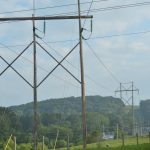From shopping to shade, ways to reduce electric costs
 Garrett Neese
Garrett Neese
With electric rates going up and the increased usage that comes with battling a muggy summer, local customers are seeing higher bills.
But there are strategies people can use to compensate, both in choosing their providers and reducing the power they use.
The latest hikes took effect June 1, shortly ahead of the heat dome that drove the highest demand on the region’s electric grid in the past 14 years, said Nils Hagen-Fredriksen, press secretary for the Pennsylvania Utilities Commission.
“There’s a greater demand across the board, which has an impact on pricing and also has an impact on systems that we depend upon,” he said. “And then there’s that personal impact … on your budget.”
The average high temperature in the Pittsburgh area since June 1 has been 84.4 degrees — about 3 degrees warmer than normal, though down slightly from last summer, said Jason Frazier, a meteorologist with the National Weather Service in Pittsburgh. It would be the 20th-warmest summer on record in the Pittsburgh area.
This year, the average low temperature has been 65.2 degrees. If that continues, this year will bring the warmest of the low temperatures in more than 60 years.
“If you don’t cool off as quickly when the temperature stays elevated, for a lot of people, maybe the (air conditioner) stays running on all night, or the time before you’re starting to kick it back up again in the morning isn’t very long,” Frazier said.
A cold front passing through today is expected to cool temperatures down to normal levels before it reaches back into the 90s — nearly 10 degrees above normal through the weekend.
There may be some relief the last week of August, but that could be short-lived. Frazier said there’s a good chance the weather will be hotter than normal in early September.
“Any prolonged cool period doesn’t appear likely over here the next couple of weeks,” Frazier said.
June 1, the start of meteorological summer, is also the first of two days annually where utilities adjust the amount they charge to customers using their default service.
That rate, based on what utilities pay generators for the electricity, makes up 40% to 60% of a bill. West Penn Power’s rate went up about 8.8% at the start of July.
Customers can partially offset increases by price shopping for another electricity supplier, something about one in four residential customers do, said Hagen-Frederiksen.
Keeping the lowest price may mean suppliers every three or six months.
“There are some folks who go into the store and they buy Coke or Pepsi or Dr. Pepper all the time, because that’s what they want,” Hagen-Fredriksen said. “There are others who go in and they are looking for the absolute lowest price that week, and they’re happy to bounce from brand to brand based on the financial savings. And energy shopping is much the same way.”
Still, he said, “The energy you do not use is the cheapest energy you’ll ever see.”
Maintenance can help. A dirty furnace filter or blocked vents can affect usage by up to 15%, Hagen-Frederiksen said.
Customers can also ask utilities about budget billing plans, which smooth bills to consistent amounts all year, or weatherization programs.
Even simpler steps add up — closing blinds or using fans to keep air moving.
“Moving air can feel 4 or 5 degrees cooler than still air,” Hagen-Frederiksen said.
The PUC also suggests delaying heat-generating activities like running a stove until it cools down at night.
“It might not be much hour to hour,” Hagen-Frederiksen said. “But when you multiply that times 30 or 31 days a month, it can turn into real dollars.”
A list of electricity provider rates is at PAPowerSwitch.com.

